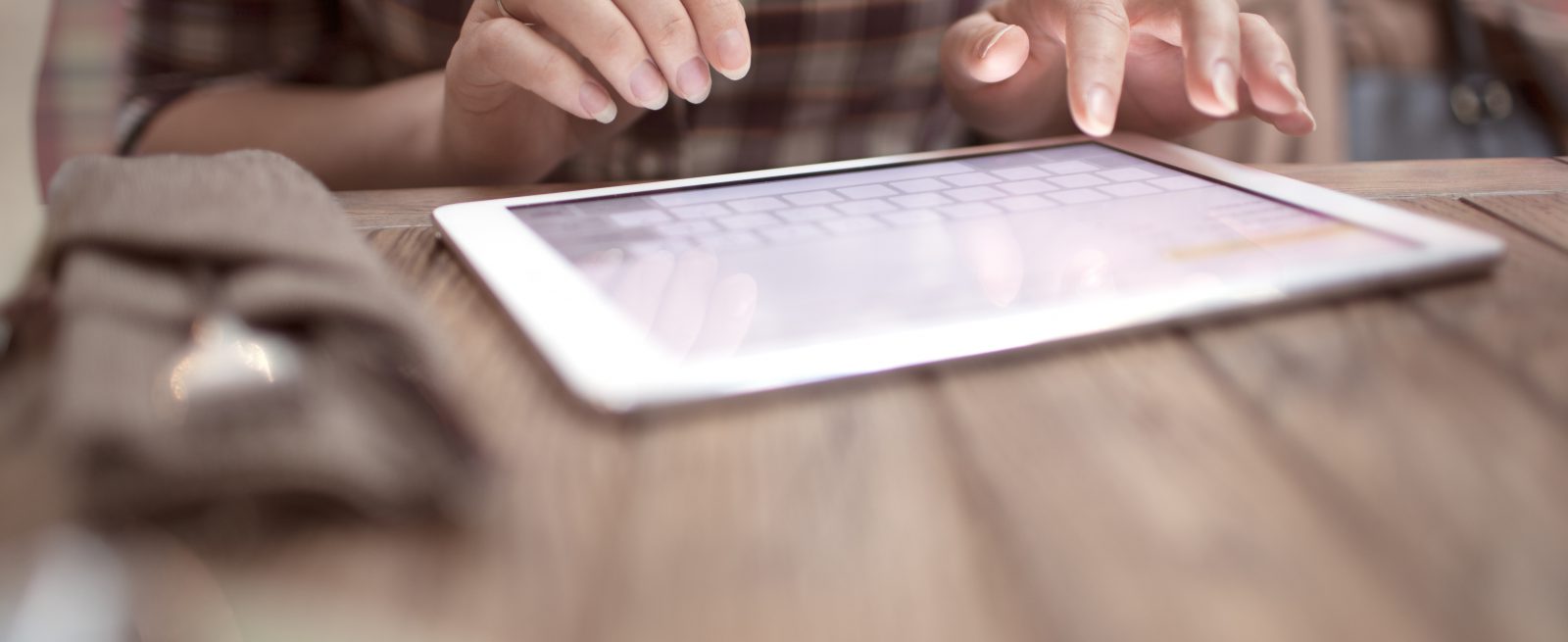When Is There Too Much Tech at the Table?
3 Min Read By Steve McKean
Think about your favorite restaurant for a second – and ask yourself, what makes it your favorite place to dine out? Sure, you love the food, and the service is always excellent. But it’s something more than that, right? It’s comfortable, relaxing – and a place where you can shut-off the rest of the world and get some actual face time with your family or friends.
Now, ask yourself how you would feel if the restaurant suddenly bolted a device (or even a large screen) to your tabletop. Rather than being greeted by a server and presented a menu, you get a tablet that’s now your permanent meal companion. Instead of the cozy, dimly-lit atmosphere that wraps you like a warm blanket, your face is now awash in the cold fluorescent light of a screen constantly vying for your attention and requesting your interaction. Instead of the desired personal discussions with friends, family or colleagues, this uninvited third-party with greasy fingerprints all over it is now front and center.
This type of on-table technology forces an entirely different dining experience than what we’re used to – and it’s obviously not a change for the better if you value human interaction. Yet, it’s an unfortunate scenario that has unfolded at some full-service restaurants around the country as certain operators have elected to sacrifice customer expectations and experience in favor of attempted gains in efficiency.
Nothing will stem the rising tide of tech usage and its alluring utility at the table.
These operators have fallen prey to the common assumption that restaurant consumers value the availability of tech conveniences more than a personal touch – particularly the younger generation. However, recent data has suggested differently. According to research conducted by the National Restaurant Association, 61 percent of younger consumers – ages 18 to 34 years old – have indicated that they prefer more restaurant staff interaction over reliance on technology.
Still, despite all the research and data, nothing will stem the rising tide of tech usage and its alluring utility at the table. After all, modern technology tools have proven to help restaurants lower overhead costs, increase revenues, and deliver valuable information about their guests. That said, the majority of operators seeking these advantages understand that technology also has “a time and a place” at the table.
There’s a delicate balance that must be struck between elegance and electronics. Take, for example, Dickie Brennan’s Restaurants in New Orleans which managed to find an elegant way to introduce a more modern payment technology for their customers, while actually enhancing its personalization and the overall dining experience. These restaurants – including its Palace Café, Bourbon House, and Tableau operations – implemented the RAIL, a mobile pay-at-the table platform that extends their existing POS system to the table.
The RAIL is cleverly designed to look like your typical bill presentation folder, however, unlike a traditional folder, it serves as a consumer-driven mobile payment platform allowing guests to securely self-pay virtually any way they wish (chip-based credit card, smartphone, gift card, cash, etc.) and conduct other valuable functions, like auto-calculating the tip, bill-splitting evenly, by person or by item, and issuing email receipts. In addition to EMV Point-to-Point Encryption, the RAIL provides the restaurants with other benefits such as, increased sales, quicker table-turns, bigger tips for servers, increased staff efficiencies, lower thermal paper receipt use and cost, reduced staff hours per shift, and increased customer satisfaction.
However, the single most important feature about the RAIL is that it’s elegantly inserted into the dining experience only when it’s necessary – after the dining experience. It’s not an omnipresent technology that desecrates the traditional dining experience. Let’s face it, we all love our smartphones – but sometimes its best feature is that you can put it away.
Restaurant operators aspire to “have their cake” by gaining all the efficiencies that technology has to offer, as do their guests – but without sacrificing culture and experience by its constant intrusive presence. There are simply some tasks that shouldn’t be constantly filled by technology, and table service is one of them. Technology certainly has its place at the table, but it should never replace the person-to-person interaction between the restaurant and its customers while they dine. Technology in restaurants needs to compliment the experience, not detract from it.


